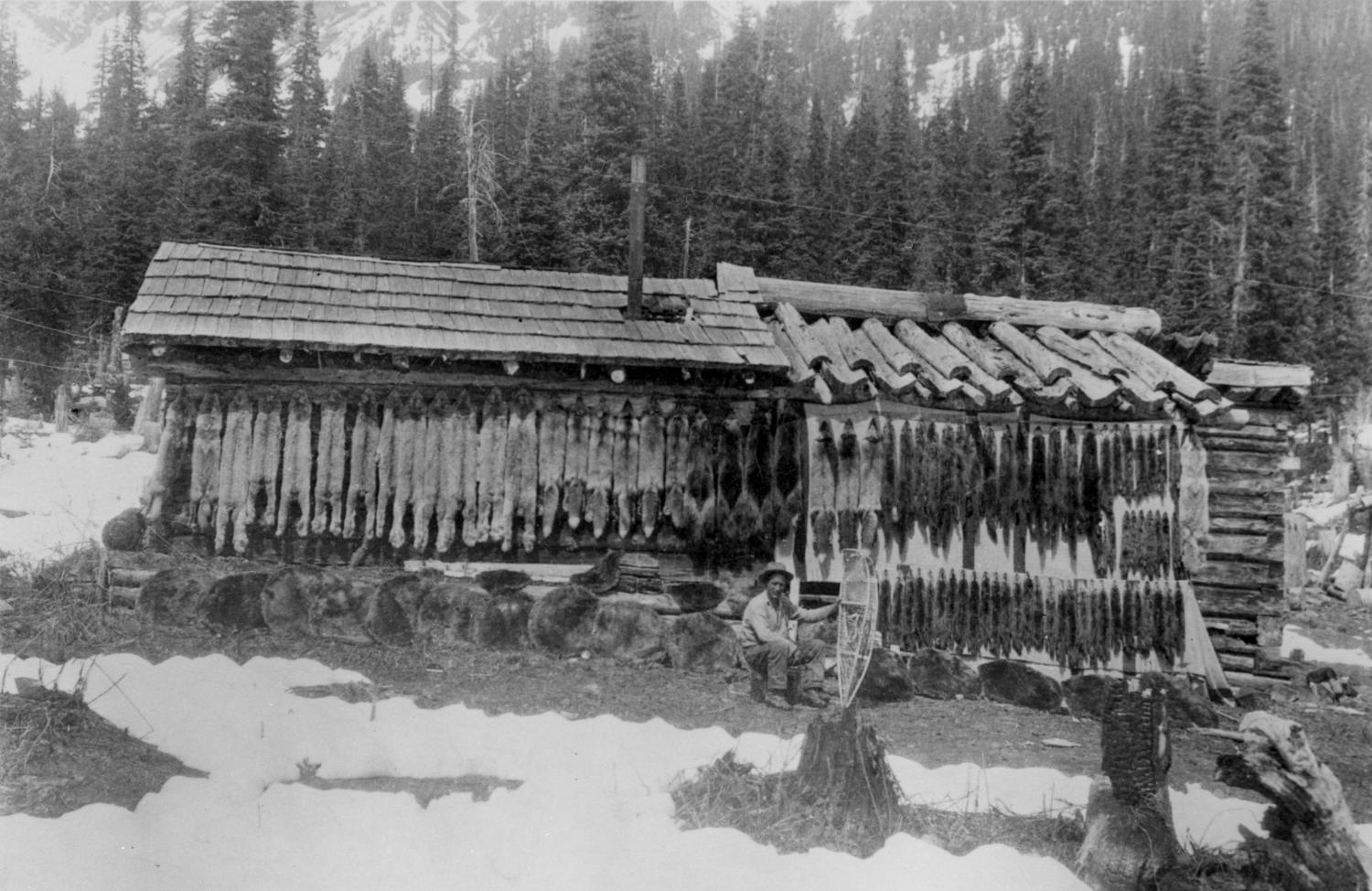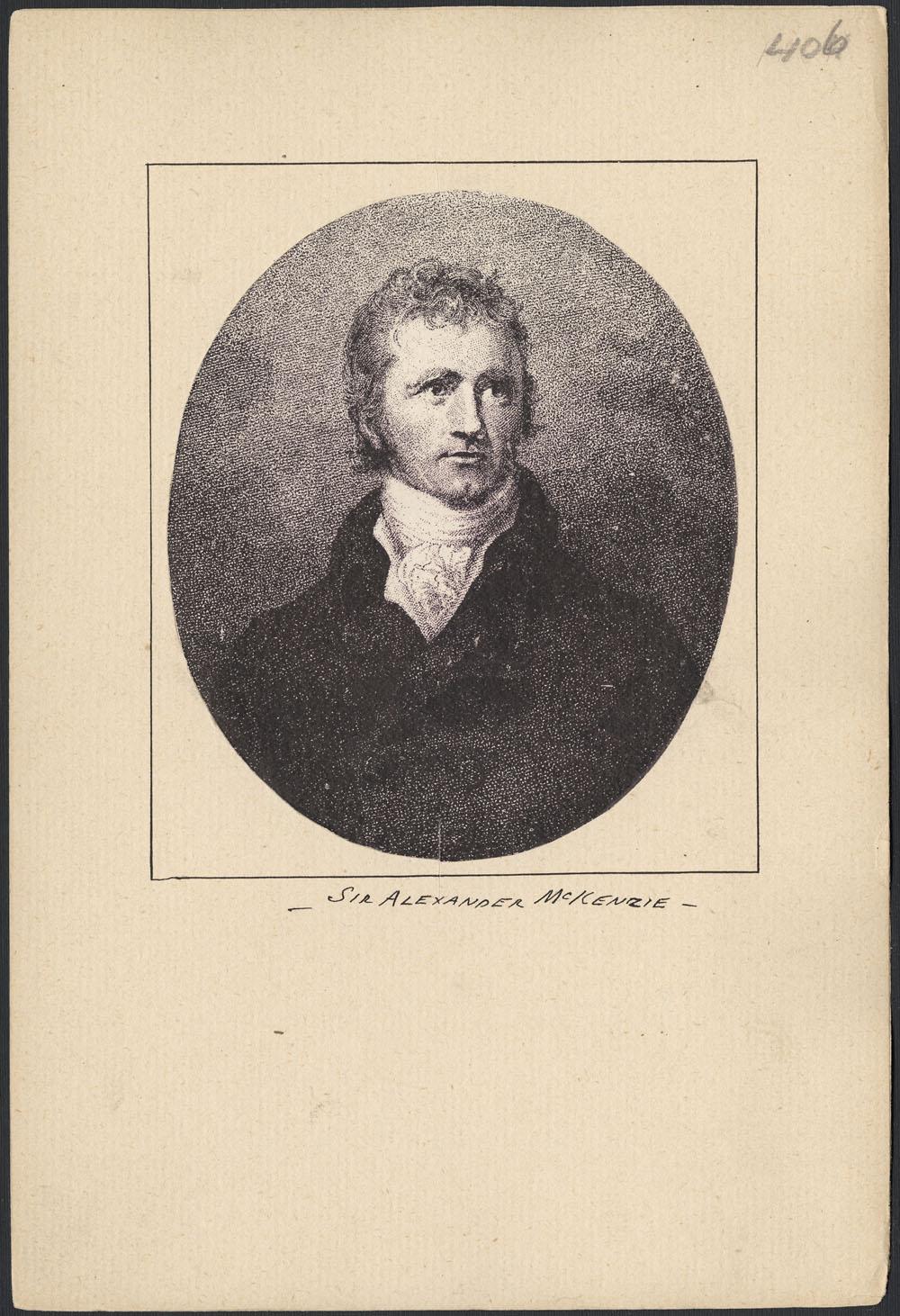HBC Arrives on the West Coast
A fur-trading merger makes the Hudson's Bay Company the predominant European force in “New Caledonia”
Date: 1821
The Hudson’s Bay Company (HBC) plays an outsized role in British Columbia’s early history. But HBC traders weren’t the first European fur traders on the scene.
Alexander Mackenzie of the North West Company (NWC), a Montréal-based rival of the HBC, arrived in B.C. in 1793. The Scottish explorer was the first European to cross North America north of Mexico. After a failed attempt to reach the Pacific in 1789, he eventually reached tidewater near Bella Coola on B.C.’s north coast in 1793. Shortly after, Rocky Mountain Fort, located southwest of present-day Fort St. John, became the mainland’s very first European settlement. According to Mackenzie, Rocky Mountain was “an excellent situation for a fort or factory, as there is plenty of wood and every reason to believe that the country abounds in beaver.”
However, it wasn’t until Mackenzie’s colleague Simon Fraser journeyed to this new land, one he dubbed “New Caledonia,” that trading posts began to dot the landscape. A fellow Scot, Fraser arrived in 1805 to expand the NWC’s operations. Fraser set up outposts across Central B.C., including Fort MacLeod, Fort St. James, Fort Fraser and Fort George — now Prince George. These outposts represented the first major centre of European fur trading on the mainland. Much of the beaver pelts amassed by the so-called Nor’Westers, a ruffian bunch of mostly French-Canadians, were shipped to England or China.
Next came the Pacific Fur Company in 1811, though this New York-based operation was short-lived. By 1813, the NWC had absorbed the company. It was around this time, as the HBC pushed further west, that the NWC and its British counterpart came to loggerheads. In 1812, the HBC established a colony near Red River, Manitoba, angering the local First Nations and Métis who had a trading relationship with the NWC. The feud sparked the Battle of Seven Oaks in present-day Winnipeg, Manitoba, in 1816. Métis hunters employed by the NWC killed 21 settlers. Violence and retribution followed until 1821 when the British Empire forced the HBC’s “Baymen” to buy out the Nor’Westers. The NWC was no more. In truth, the HBC always had the upper hand — it had the backing of Britain.
The following years saw the HBC expand its trading frontier in the Pacific Northwest, from the northern reaches of British Columbia to the western parts of modern-day Montana and Wyoming. Under Governor George Simpson, the company began to look beyond fur and exported lumber, salmon, produce and other goods to nearby Pacific markets like Hawaii and Alaska. By 1839, James Douglas had risen to the top of the HBC’s ranks, and soon after, the company looked more like a colonial government than a fur-trading operation.
Sources:
1. Barkwell, Lawrence. Battle of Seven Oaks. The Canadian Encyclopedia, 7 Feb. 2006, www.thecanadianencyclopedia.ca/en/article/seven-oaks-incident.
2. “The Continental Fur Trade.” Center for the Study of the Pacific Northwest, University of Washington, www.washington.edu/uwired/outreach/cspn/Website/Classroom%20Materials/Pacific%20Northwest%20History/Lessons/Lesson%206/6.html.
3. Cox, Sarah. Valuable First Nations Historic Sites "Will Be Gone Forever" If Site C Dam Proceeds: Archaeologist. The Narwhal, 8 Jan. 2016, thenarwhal.ca/valuable-first-nations-historic-sites-will-be-gone-forever-if-site-c-dam-proceeds-archaeologist/.
4. Fisher, Robin. Contact and Conflict Indian -European Relations in British Columbia,1774-1890. UBC Press, 1977.
5. Mackie, Richard. The Hudson's Bay Company on the Pacific, 1821-1843. University of British Columbia Open Collections, June 1993, open.library.ubc.ca/cIRcle/collections/ubctheses/831/items/1.0098807.
6. Morrison, David A. “The North West Company, 1779–1821.” The Canadian Encyclopedia, 18 Oct. 2013, www.thecanadianencyclopedia.ca/en/article/the-north-west-company-17791821-feature.
7. Poser, William J. The First Record of The Carrier Language. Working Papers in Athabaskan Linguistics, Alaska Native Language Center, 2004, www.scribd.com/document/68159778/The-First-Record-of-the-Carrier-Language.
8. Sage, W. N. (Walter Noble). “Sir James Douglas and British Columbia.” University of British Columbia Open Collections, The University of Toronto Press, 1930, open.library.ubc.ca/collections/bcbooks/items/1.0375702#p24z-5r0f:
9. Simon Fraser. The Canadian Encyclopedia, 23 June 2008, www.thecanadianencyclopedia.ca/en/article/simon-fraser.
10. “Sir Alexander Mackenzie Provincial Park.” BC Parks, Province of British Columbia, bcparks.ca/explore/parkpgs/sir_alex/.
11. “Sir George Simpson.” HBC Heritage, The Hudson's Bay Company History Foundation, www.hbcheritage.ca/people/builders/sir-george-simpson.




